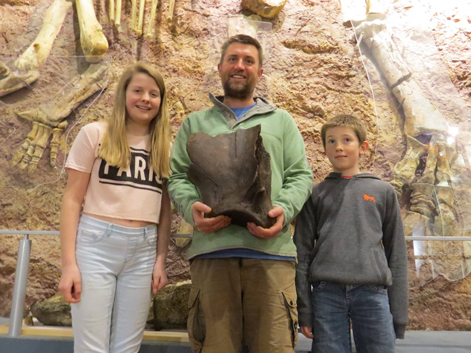Prehistoric Elephants Once Roamed the Isle of Wight
Giant prehistoric elephants once roamed the Isle of Wight. Palaeontologists know this thanks to eagle-eyed local resident Paul Hollingshead who spotted a large bone whilst exploring a beach on the western side of the island during an exceptionally low Spring tide. Mr Hollingshead spotted a brown coloured object sticking out of the sand, he hoped he had found a dinosaur bone, but the fossil is actually part of a scapula (shoulder bone) from a prehistoric elephant identified as Palaeoloxodon antiquus.
A Fantastic Fossil Find
Mr Hollingshead and Family Show Off the Fossil
The fossil has been dated to around 100,000 years ago. During this time, our planet was warming up after the previous Ice Age. Average annual temperatures were around three degrees Celsius higher in the northern hemisphere than they are today. In this interglacial period (referred to as the Ipswichian in the UK, or the Sangamonian in the United States), elephants and other animals now associated with Africa roamed as far north as Great Britain.
Prehistoric Elephants
Palaeoloxodon antiquus was about the size of a modern African elephant, unlike the much better known Woolly Mammoth, the Palaeoloxodon elephants had straight-tusks. The only people who might have seen this prehistoric elephant 100,000 years ago were probably Neanderthals. Although our species, Homo sapiens had evolved by then, the fossil record suggests that the earliest modern people in Europe did not arrive until some 40,000 years later.
The Eofauna Scientific Research range includes several models of prehistoric elephants. To view this range of models and figures: Eofauna Scientific Research Models.


